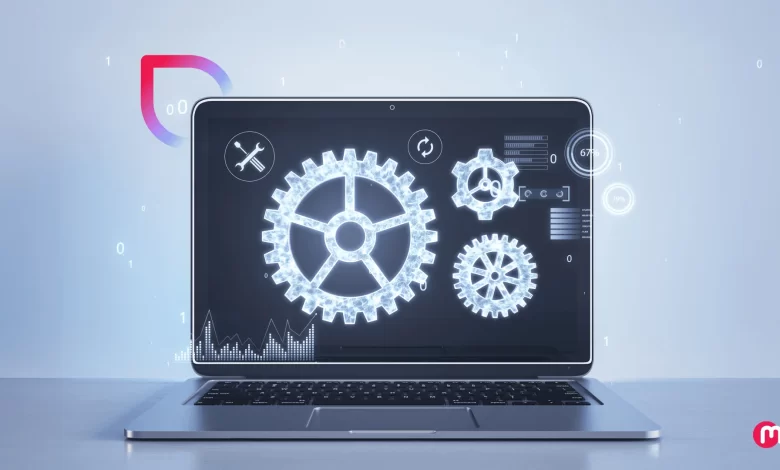What Is Software Maintenance? A Complete Breakdown

Software maintenance is a critical phase in the Software Development Lifecycle (SDLC) that ensures the optimal performance of a system post-deployment. As user needs evolve and technology advances, maintaining software becomes essential to keep systems efficient, scalable, and aligned with business goals. In a dynamic environment where user expectations, security standards, and technology ecosystems are constantly evolving, software maintenance plays a pivotal role in ensuring the long-term reliability, performance, and security of an application.
Software maintenance involves updating and improving software after its release. It includes fixing bugs, adding new features, enhancing performance, and ensuring compatibility with new hardware or operating systems. This ongoing cycle of maintenance keeps applications competitive, efficient, and relevant in the long run. It ensures that the software remains reliable, secure, and aligned with evolving business needs and technological advancements.
The importance of software maintenance lies in its ability to ensure consistent software performance, increase ROI, provide better security, adapt to changing user needs and technological advancements, enhance capabilities, reduce downtime, and support project collaboration. By maintaining software, businesses can achieve long-term product performance, increased ROI, better security and scalability, capability enhancement, seamless project continuation and collaboration, reduced downtime, improved user experience, and the ability to adapt to new technologies easily.
There are four main types of software maintenance, including corrective, adaptive, perfective, and preventive. Corrective maintenance involves fixing bugs and addressing system crashes or performance issues. Adaptive maintenance focuses on adapting software to work with new operating systems or hardware. Perfective maintenance involves improving the user interface, enhancing system performance, adding new features, and modifying existing functions for better usability. Preventive maintenance aims to identify and fix potential issues before they cause damage, such as refactoring code, optimizing performance, updating outdated components, strengthening security, and improving documentation.
A structured software maintenance process involves identifying issues, analyzing them, designing solutions, implementing changes, testing, and deploying updates. This process ensures that software functionality is maintained, performance is improved, and the system can adapt to changing environments. By following a well-defined approach to software maintenance, businesses can minimize downtime, reduce security risks, and enhance user satisfaction.
Common challenges in software maintenance include technical debt, dependency management, system complexity, security vulnerabilities, legacy systems, advanced technologies integration, and frequent changes in requirements. These challenges can be addressed by regularly refactoring code, enforcing coding standards, modularizing the codebase, documenting interdependencies clearly, patching vulnerabilities promptly, modernizing outdated systems, hiring experts with the required expertise, implementing clear integration strategies, and aligning development with evolving business priorities.
The cost of software maintenance typically ranges from 15% to 25% of the software development cost annually. However, the final cost depends on factors such as software complexity, type of software, high-end features, integrations, technology stack, type of required maintenance, frequency of updates, code quality, team structure, and quality requirements. By estimating the annual cost based on system complexity and considering key factors that affect maintenance costs, businesses can allocate resources effectively for software maintenance.
There are five widely used software maintenance models, including the Quick-Fix Model, Iterative Enhancement Model, Reuse-Oriented Model, Boehm’s Model, and Taute Maintenance Model. Each model offers a structured approach to updating and improving software over its lifecycle, catering to different scenarios based on the nature of the application, its complexity, and long-term business goals. Selecting the right model is essential for ensuring effective maintenance and long-term success of the software.
Best practices to improve software application maintenance include creating a structured maintenance strategy, maintaining thorough and accessible documentation, modernizing outdated systems, streamlining maintenance workflows, implementing continuous monitoring and review, planning for end-of-life transitions, leveraging external maintenance expertise, and integrating automated testing frameworks. By following these best practices, businesses can enhance their software maintenance process, ensure system stability, security, and scalability, and drive long-term success.
In conclusion, software maintenance is a strategic priority that ensures the long-term reliability, performance, and security of an application. By treating software maintenance as an ongoing process that requires proactive and structured approaches, businesses can future-proof their digital investments and ensure sustainable value over time. Partnering with a reliable custom software development company like MindInventory can help optimize and maintain software infrastructure through robust managed services tailored to unique application needs. By following best practices, businesses can enhance their software maintenance process, drive scalability, reliability, and long-term success, and ensure the continuous improvement and adaptation of their software systems.





